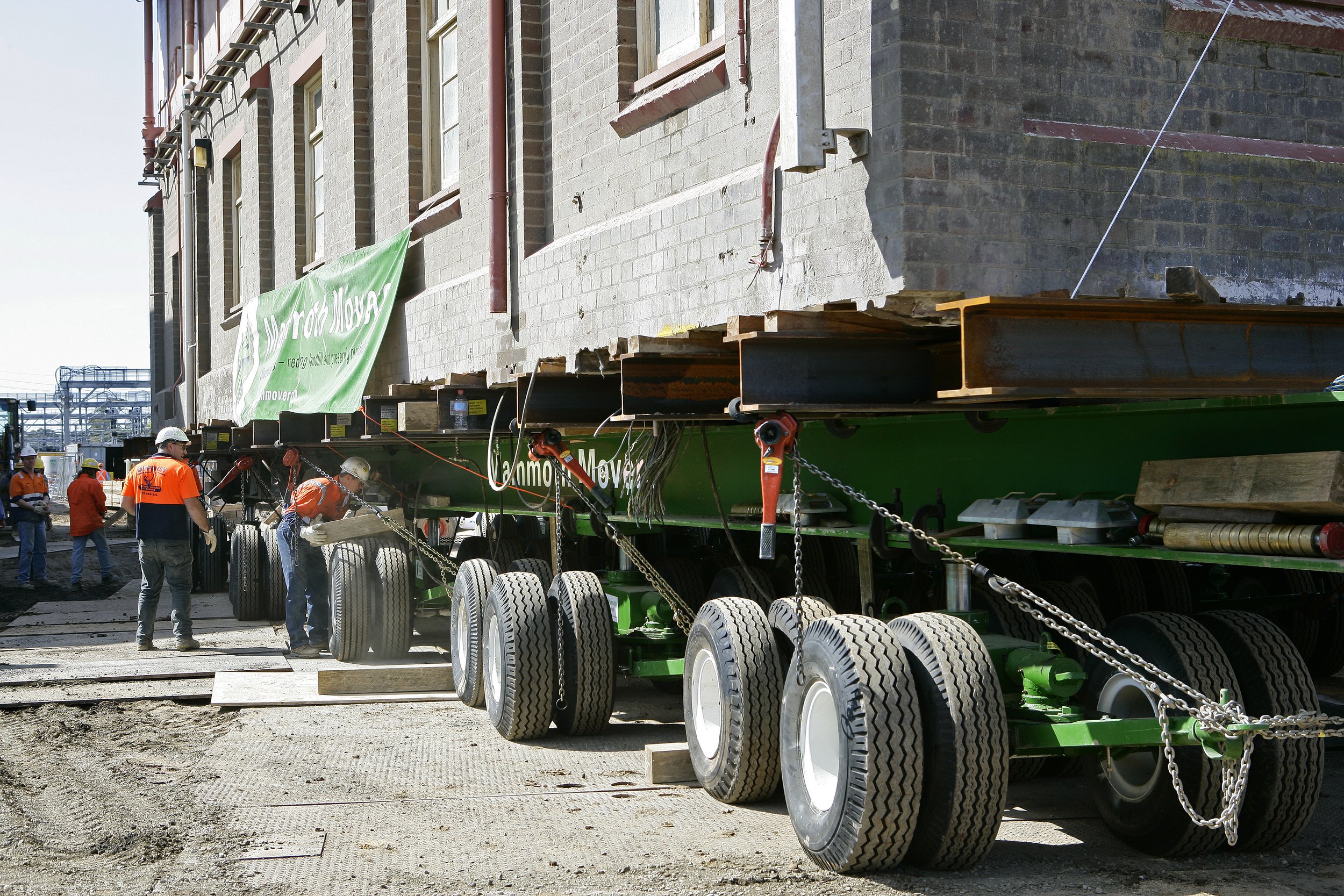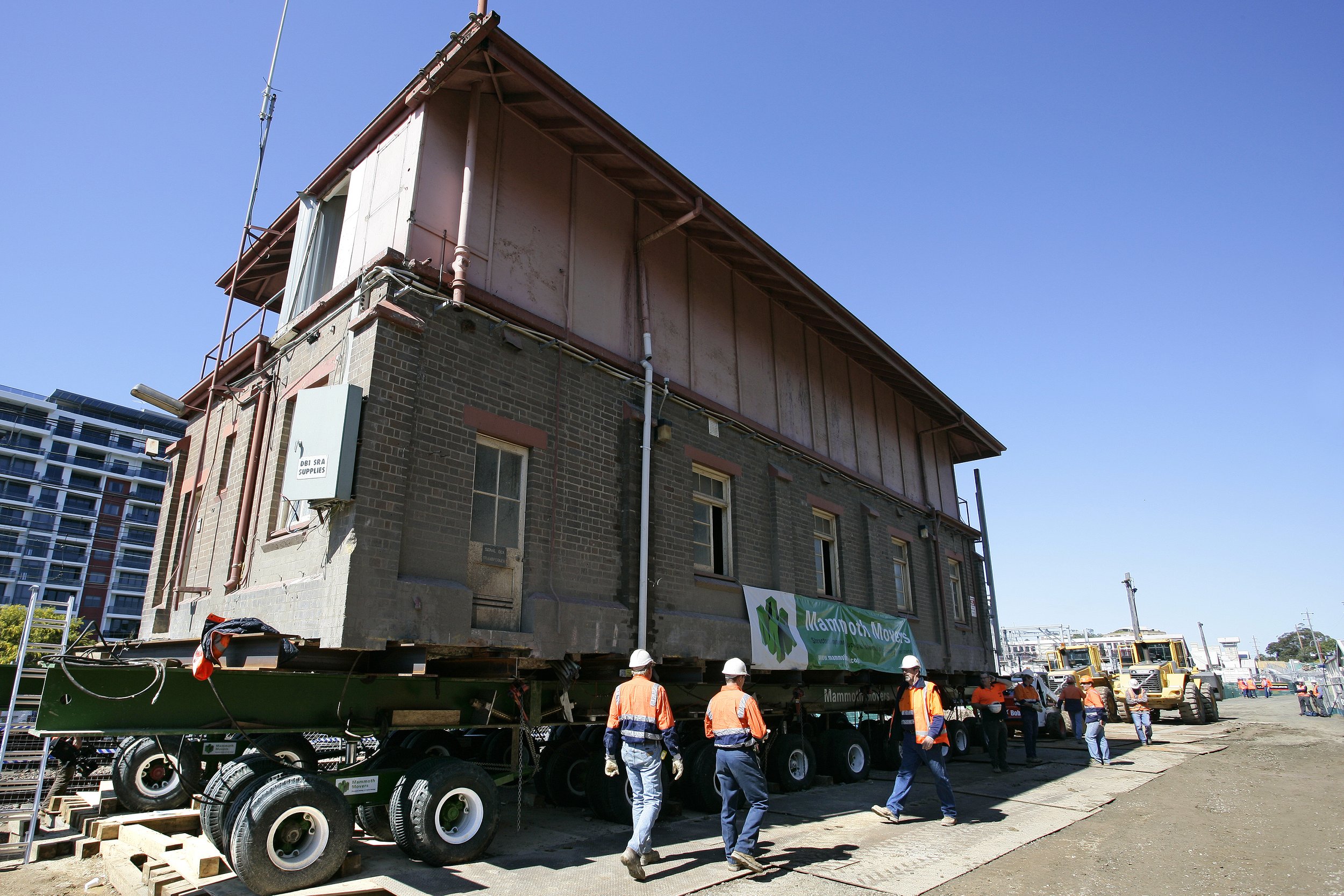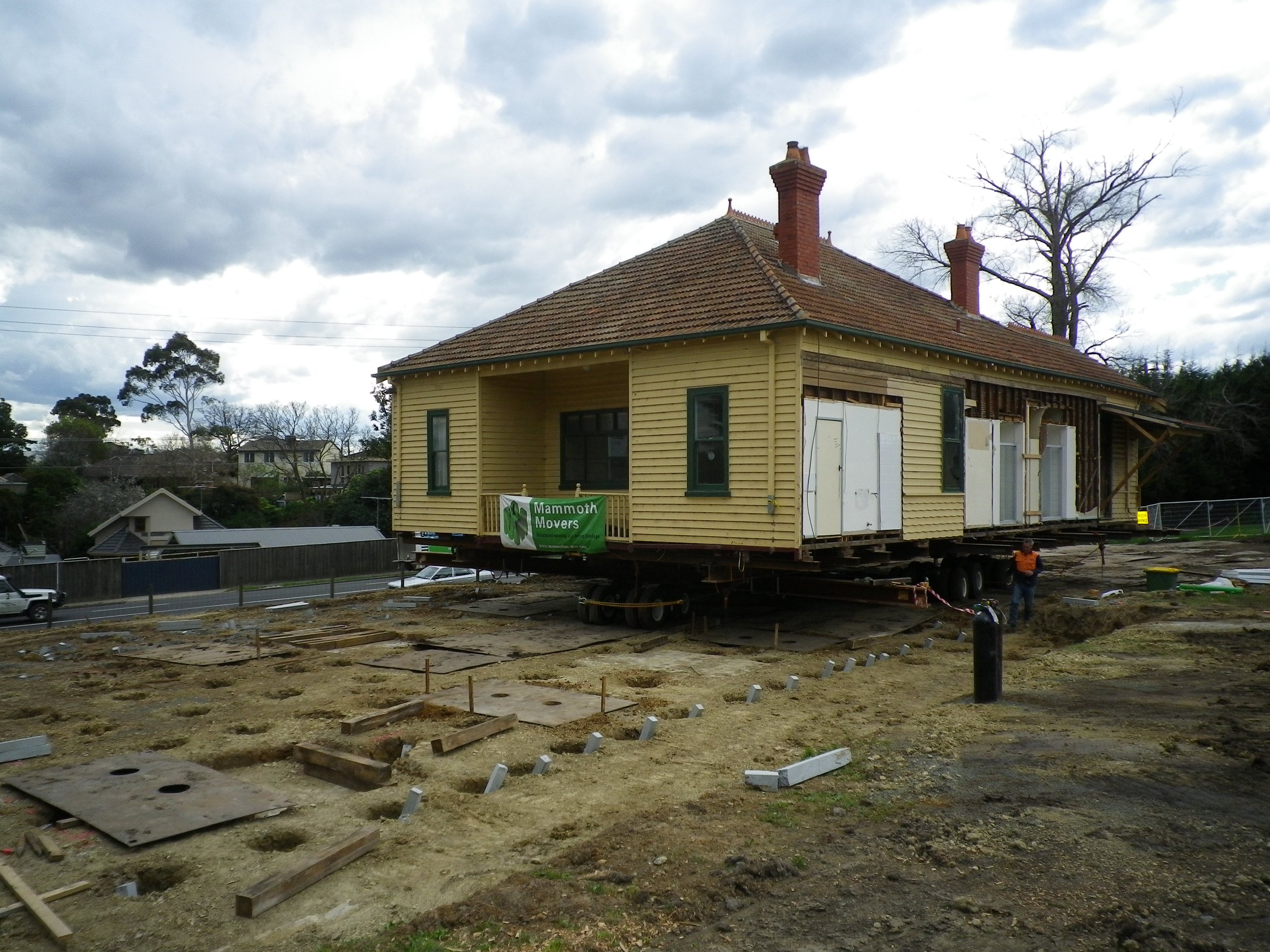
Advantages of One-Piece Relocation
When it comes to preserving heritage buildings, the relocation process plays a pivotal role. Mammoth Movers, a professional engineering company endorsed by Engineers Australia, champions the one-piece relocation approach.
For clients and stakeholders committed to heritage preservation and efficient project execution, relocating buildings in one piece offers clear advantages over disassembly and reassembly. From cost savings and risk reduction to maintaining heritage integrity and ensuring safety, the benefits are compelling.
In this article, we’ll delve into the advantages of moving buildings intact and compare it to the more traditional approach of disassembly and rebuild and provide a few real-world examples.
1. Structural Integrity and Code Compliance
Structural integrity: Whole-building relocation mitigates various project risks inherent in disassembly and reassembly. The integrity of the structure is maintained throughout the move, reducing the likelihood of structural damage. Disassembling and reassembling structures can weaken their integrity, especially when dealing with historical or delicate materials. This approach may also result in the need to replace parts damaged through the disassembly/reassembly process which would have otherwise been ok if not disturbed. These buildings are not designed to be pulled apart. The process adopted by Mammoth Movers is such that the building does not see new stresses during the relocation. The building is “convinced that it is still on its foundations” during the one piece relocation process.
Code compliance: Relocating a building in one piece avoids the need for costly upgrades to meet current building codes. When structures are disassembled and rebuilt, compliance gaps are likely to arise due to changes in regulations over time.
2. Streamlined Process and Cost Efficiency
Streamlined process: The disassembly and reassembly process involves meticulous cataloging, careful dismantling, transportation, and reassembly. These intricate tasks are labour-intensive and time-consuming. In contrast, moving a building intact minimizes labour and material costs associated with dismantling and reconstruction and results in a reduction in labour and equipment costs proportional to project duration. Moreover, the risk of damage to individual components during the disassembly and reassembly process can lead to additional, unforeseen expenses.
3. Project Complexity and Safety
Reduced contractors: Relocating a building in one piece reduces the need for numerous contractors on-site, simplifying project management and coordination. This streamlined approach minimizes the complexities associated with managing multiple trades and reduces the potential for scheduling conflicts and delays.
Improved safety: Safety is paramount in any construction or relocation project. The whole-building relocation method inherently reduces the risks associated with on-site construction activities. With fewer workers required compared to disassembly and reassembly, the likelihood of accidents and injuries is diminished. Additionally, the controlled environment in which the building is prepared for relocation enhances overall safety standards. Relocation in one piece avoids many high risk construction activities such as craneage and working at heights.
4. Heritage Fabric
Loss of heritage fabric: The authenticity of heritage buildings is paramount. Whole-building relocation ensures that the original materials and craftsmanship are preserved in their entirety. Disassembly often requires the replacement of damaged or lost materials which are often hard to match, compromising the building's historical integrity. By maintaining the building's fabric intact, Mammoth Movers ensures that the heritage value is retained, meeting the stringent standards of preservation societies and heritage councils.
Patina retention: Heritage buildings carry a unique patina—a weathered, aged appearance that tells their story. Disassembly disrupts this patina, affecting the building’s character. One-piece relocation preserves the patina, honouring the building’s history.
5. Mitigating Risks and Costs
Accelerated project schedule: Time is a crucial factor in any development project. Relocating a building in one piece significantly shortens the project timeline compared to the extensive process of disassembly and reassembly. This acceleration allows for quicker commencement of subsequent development phases, providing a substantial advantage in large-scale projects.
Holding costs and escalation: A shortened project schedule directly impacts cost escalation. With whole-building relocation, the risk of cost overruns due to prolonged timelines is significantly reduced. The expedited process allows for better control over budget allocations and minimizes the financial impact of unforeseen delays.
Storage risk: Components stored for extended periods face potential damage, misplacement, or deterioration and incurs additional costs—space rental, security, and maintenance. Mammoth Movers’ one-piece approach mitigates this risk.
Disassembly and reassembly
Illustration of problems:
Gawler Rail Shed, South Australia
The Gawler Rail Shed, once disassembled, faced challenges in reassembly. The project stalled due to funding constraints, changing priorities, and disagreements among stakeholders. As a result, the shed remains in pieces, a cautionary tale for heritage preservation efforts.
Florence Hummerston Kiosk, Western Australia
(now The Island at Elizabeth Quay) was successfully relocated piece by piece in 2012. However the project came at a cost of approximately A$4 million, significantly more than today’s one piece relocation cost. Some critics also argued that the relocation disrupted the building’s authenticity.
Urrbrae Gatehouse, South Australia
After careful consideration, it was decided not to proceed with the relocation of the project. Instead, the building was demolished and reconstructed brick by brick. However, this approach came at a cost. The authenticity of heritage buildings is paramount, and disassembly often leads to the loss of original materials and craftsmanship, which are difficult to replicate. This compromises the building’s historical integrity. Additionally, the unique patina that gives heritage buildings their character was disrupted in the process. While credit should be given to the State Government for choosing to rebuild, the project faced significant delays, finally completing in July 2024—almost two years after the original late 2022 deadline. It is reported that the project required the replacement of damaged stonework features and no doubt a number of other original materials were unable to be salvaged during disassembly. The final cost or the project remains undisclosed. Choosing whole-building relocation would have preserved both the heritage fabric and the building's patina, ensuring that its historical value remained intact.

Mammoth Movers’ commitment to preserving our architectural legacy through one-piece relocation ensures that our past remains intact. Relocation in one piece methodology is mature and proven. A South Australian Company, Mammoth Movers stands at the forefront of this innovative approach, providing unparalleled service and expertise in the field of building relocation. Local and available to improve South Australian projects, avoid disassembly pitfalls, and safeguard our heritage for generations to come.
Remember, every building tells a story, and Mammoth Movers services can ensure that story continues.









